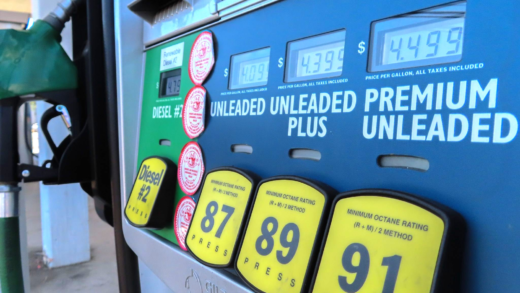NASCAR pit crews rely on specialized tools for efficiency and safety during races. Training focuses on mastering these tools, while technology enhances performance. Safety measures, including fire extinguishers and emergency systems, protect drivers. Tool failures can lead to serious consequences, emphasizing the need for proper maintenance and backup plans.
Key Tools of the Trade: Exploring the Must-Have Equipment
NASCAR pit crew tools are essential for ensuring that every pit stop is as efficient and effective as possible. The tools used by a pit crew are specially designed to meet the demands of high-speed racing, where every second counts. Key tools include:
- Impact Wrenches: These power tools are crucial for quickly changing tires. They can remove and replace wheel nuts in mere seconds, making them a staple in every pit stop.
- Jack: A reliable jack is vital for lifting the car quickly. NASCAR pit jacks are designed for speed and stability, allowing the crew to lift the car in a fraction of a second.
- Fuel Cans: Specially designed fuel cans allow for quick refueling. These cans are built to minimize spills and maximize speed during the refueling process.
- Tire Pressure Gauges: Keeping tires at optimal pressure is crucial for performance. These gauges help ensure that each tire is properly inflated before the car hits the track again.
- Fire Extinguishers: Safety is paramount in NASCAR. Fire extinguishers are always on hand to deal with any fire emergencies during pit stops.
These tools not only enhance the efficiency of pit stops but also ensure the safety of both the crew and the driver. Understanding the importance of each tool helps appreciate the skill and coordination required during a NASCAR pit stop.
The Role of Each Tool: What They Do During a Race
Each tool in a NASCAR pit crew’s arsenal plays a specific role during a race. Understanding these roles can provide insights into how a well-oiled pit crew operates:
- Impact Wrenches: These tools are responsible for loosening and tightening wheel nuts. Their quick operation significantly reduces the time spent on tire changes.
- Jack: The jack allows crew members to lift the car off the ground swiftly, enabling tire changes and other adjustments without delay.
- Fuel Cans: During a race, drivers often need refueling. The design of these cans allows for quick and efficient refueling, minimizing the time spent in the pit.
- Tire Pressure Gauges: After a tire change, these gauges ensure that tires are at the correct pressure, which is essential for maintaining grip and handling on the track.
- Fire Extinguishers: In the event of a fire, these extinguishers protect the crew and driver, highlighting the importance of safety equipment in the pit.
Each tool is designed not only for functionality but also for speed. The collective use of these tools exemplifies teamwork and precision, critical elements in NASCAR racing.
Speed Matters: How Tools Contribute to Pit Stop Efficiency
In NASCAR, speed is everything, and the tools used by the pit crew directly impact pit stop efficiency. A well-timed pit stop can mean the difference between winning and losing a race. Key factors include:
- Tool Design: NASCAR tools are specifically engineered for quick use. For example, impact wrenches are lightweight yet powerful, allowing for rapid tire changes.
- Training: Crew members undergo extensive training to master the use of these tools. This training ensures that each member knows their role and can perform it under pressure.
- Team Coordination: The efficiency of a pit stop relies on seamless teamwork. Each tool is used in a synchronized manner to minimize downtime.
- Technology Integration: Modern tools often incorporate technology that aids in faster operations, such as electronic monitoring of tire pressure and fuel levels.
With all these elements combined, NASCAR pit crews can perform pit stops in just a few seconds, showcasing the critical role of tools in achieving high performance.
Teamwork in Action: Why Collaboration is Key in the Pit
Teamwork is essential for NASCAR pit crews. The efficiency of pit stops relies heavily on how well the crew members collaborate. Each member has a specific role, and they must perform their tasks in perfect sync to achieve the best results. The following factors highlight the importance of teamwork in the pit:
- Defined Roles: Every crew member knows their job. From the tire changers to the fuelers, each role is critical. This clarity reduces confusion and speeds up operations.
- Effective Communication: Crew members communicate constantly. They shout commands and updates, ensuring everyone is on the same page. This helps prevent mistakes that could cost valuable seconds.
- Trust and Reliability: Trust is built through practice. Crew members rely on each other to execute their tasks flawlessly. A slip-up by one can affect the whole team’s performance.
- Practice Makes Perfect: Teams spend hours training together. This practice builds camaraderie and improves efficiency. It’s not just about knowing what to do but how to do it together.
In NASCAR, a well-coordinated crew can shave off critical seconds during a pit stop. The collaboration ensures that tools are used effectively and safely, directly impacting race outcomes.
Design Differences: How NASCAR Tools Stand Out from Standard Tools
NASCAR pit crew tools are specifically designed for high-performance racing. Unlike standard auto tools, NASCAR tools prioritize speed, safety, and efficiency. Here are key differences:
- Material Quality: NASCAR tools are made from high-grade materials that can withstand intense conditions. This durability contrasts with standard tools, which may not perform well under extreme stress.
- Weight and Size: NASCAR tools are often lighter and more compact. This design allows for quicker handling during pit stops, making a significant difference when every second counts.
- Functionality: Many NASCAR tools serve multiple purposes. For instance, an impact wrench used in the pit can often be adjusted for different settings, unlike standard tools that typically have a single function.
- Safety Features: NASCAR tools include enhanced safety features. These are critical in high-pressure environments where any malfunction could lead to accidents.
The design of NASCAR pit crew tools showcases innovation tailored to the demands of racing. This focus on specialized design enables crews to perform tasks quickly and safely, distinguishing them from regular automotive tools.
Evolution of Tools: Interesting Facts About Their Development
The evolution of NASCAR tools reflects the sport’s growth and technological advancements. Over the years, tools have transformed dramatically, improving efficiency and safety. Here are some notable developments:
- Early Innovations: Initially, pit crews relied on manual tools, which were slow and cumbersome. The introduction of pneumatic tools revolutionized pit stops, allowing for faster tire changes.
- Technological Integration: Modern tools now integrate technology, such as digital torque wrenches that provide precise readings. This accuracy helps maintain safety and performance standards.
- Customization: NASCAR teams often customize their tools to fit specific needs. This customization is crucial for optimizing speed and efficiency during races.
- Training Evolution: With tool advancements, training methods have also evolved. Crews now use simulations to practice with new tools, enhancing their adaptability to changes in technology.
The evolution of NASCAR tools is a testament to the ongoing quest for speed and safety in racing. Understanding this progression highlights the importance of innovation in the sport.
Training the Crew: Mastering the Tools
Essential tools for NASCAR pit crews require proper training to ensure crew members use them effectively. Training focuses on several key aspects:
- Hands-On Practice: Crew members spend hours practicing with tools in simulated race conditions. This helps them become proficient and confident in their skills.
- Role-Specific Training: Each crew member specializes in specific tasks. For example, tire changers focus on using impact wrenches, while fuelers practice with fuel cans to ensure quick refueling.
- Team Drills: Teams regularly conduct drills to enhance coordination. These drills mimic race scenarios, allowing crew members to work together under pressure.
- Feedback and Improvement: After practice sessions, crews receive feedback on their performance. This helps them identify areas for improvement and refine their techniques.
Through rigorous training, NASCAR pit crews master their tools, ensuring they can execute tasks swiftly and safely during races.
Technology’s Influence: Modern Tools of NASCAR Pit Crews
Technology has significantly impacted NASCAR pit crew tools, enhancing efficiency and safety. Key advancements include:
- Smart Tools: Many NASCAR tools now feature technology that provides real-time data. For instance, digital torque wrenches offer precise torque readings to ensure proper tire installation.
- Automated Systems: Automated fueling systems help reduce the time spent on refueling. These systems minimize human error and streamline the process.
- Data Analytics: Teams use data analytics to analyze pit stop performance. This data helps crews identify trends and make adjustments to improve efficiency.
- Enhanced Safety Features: Modern tools are designed with safety in mind, incorporating features that protect crew members and drivers during pit stops.
The integration of technology into NASCAR pit crew tools has transformed the way teams operate, allowing for faster and safer pit stops.
Safety First: Tools Designed to Protect Drivers
Safety is paramount in NASCAR, and various tools are designed specifically to protect drivers. Key safety tools include:
- Fire Extinguishers: Always present during pit stops, these extinguishers ensure that any fire emergencies can be handled quickly, protecting both the crew and driver.
- Safety Equipment: Crew members wear protective gear, including helmets and fire-resistant suits, to minimize injury risks during races.
- Emergency Shut-Off Systems: These systems allow crew members to quickly shut down the car’s engine in case of an emergency, preventing further complications.
- Tool Design: NASCAR tools are engineered to minimize risks. For example, impact wrenches are designed to prevent accidental discharge, ensuring safety during high-pressure situations.
By prioritizing safety in tool design and crew training, NASCAR ensures that drivers and crew members can perform their tasks effectively while minimizing risks.
Tool Failures: What Happens When Things Go Wrong?
Tool failures during NASCAR pit stops can have serious consequences, impacting race outcomes and crew safety. Common issues include:
- Malfunctioning Equipment: If a tool like an impact wrench fails, it can delay tire changes, costing precious seconds and potentially losing positions in the race.
- Injury Risks: A tool malfunction can pose safety risks to crew members. For instance, a jack that fails to hold the car can lead to serious injuries.
- Increased Stress: A failure can create panic among the crew, leading to mistakes. This stress can affect overall team performance.
- Backup Plans: Teams prepare for tool failures by having backup tools ready. This contingency planning helps mitigate the impact of any issues that arise during pit stops.
Understanding the potential consequences of tool failures underscores the importance of regular maintenance and training for NASCAR pit crews.





Comments are closed.